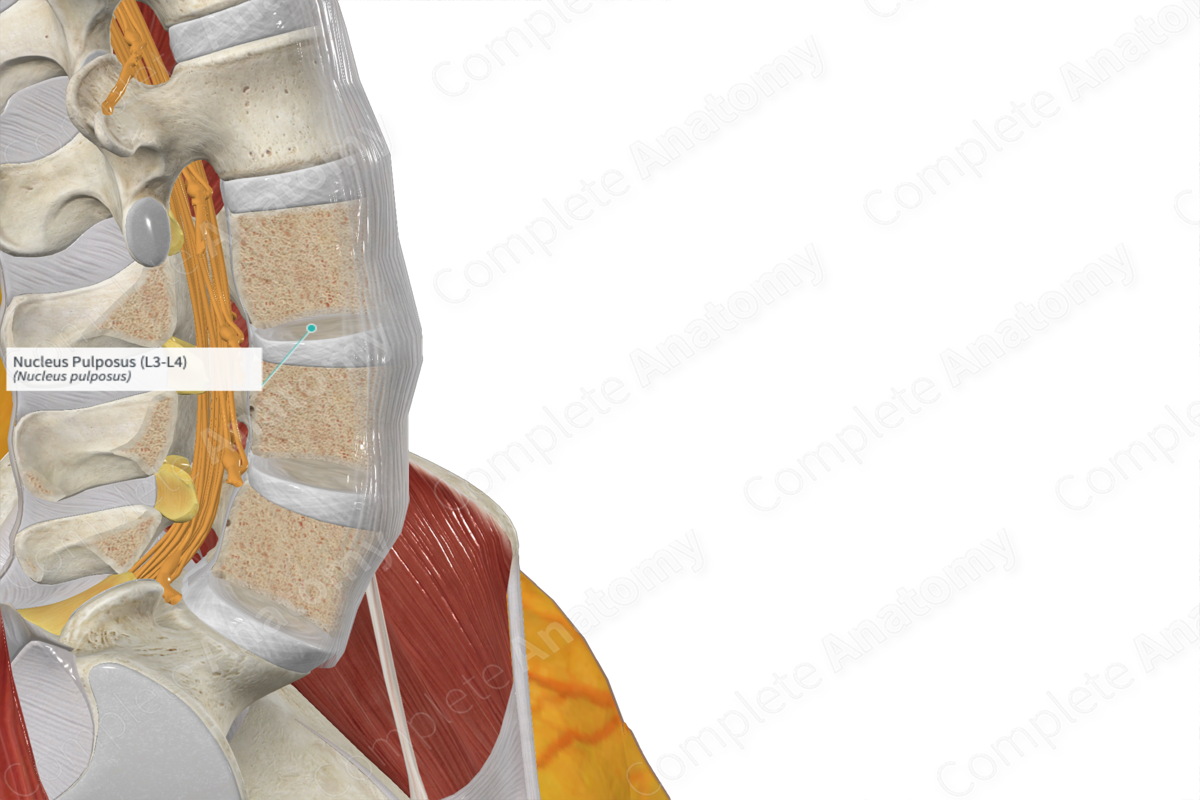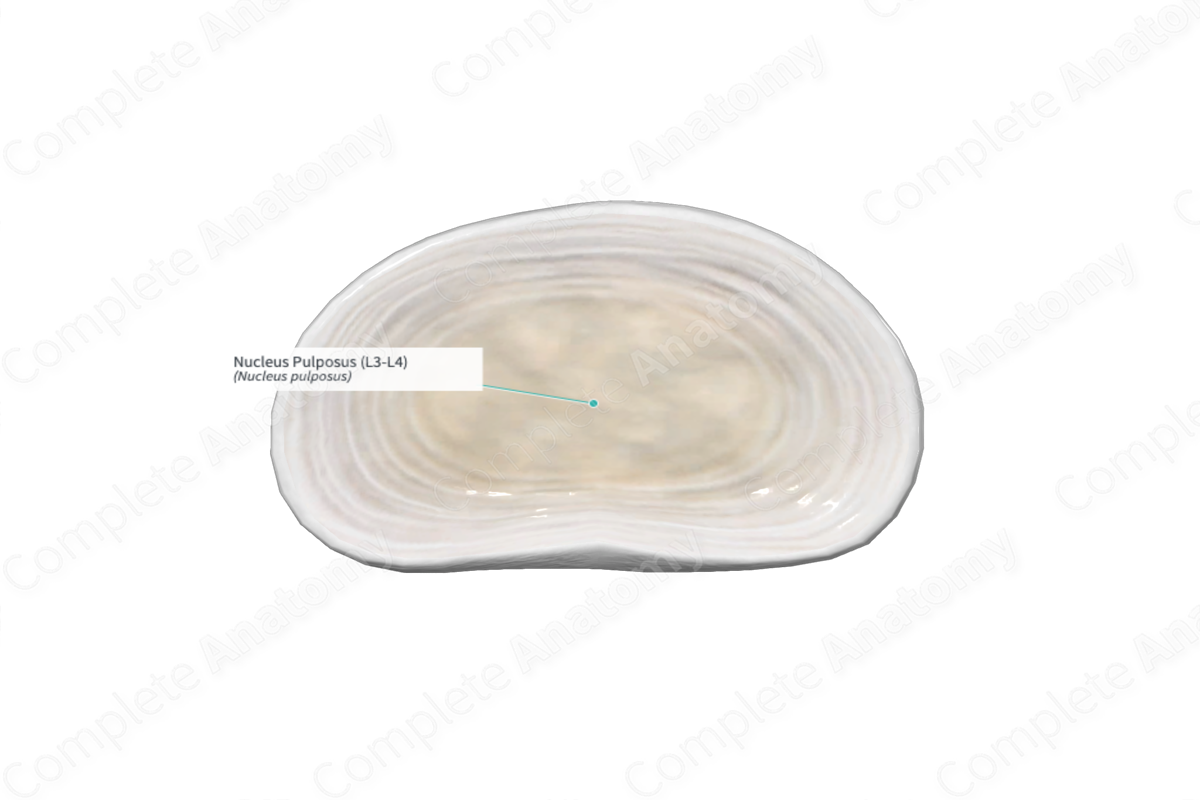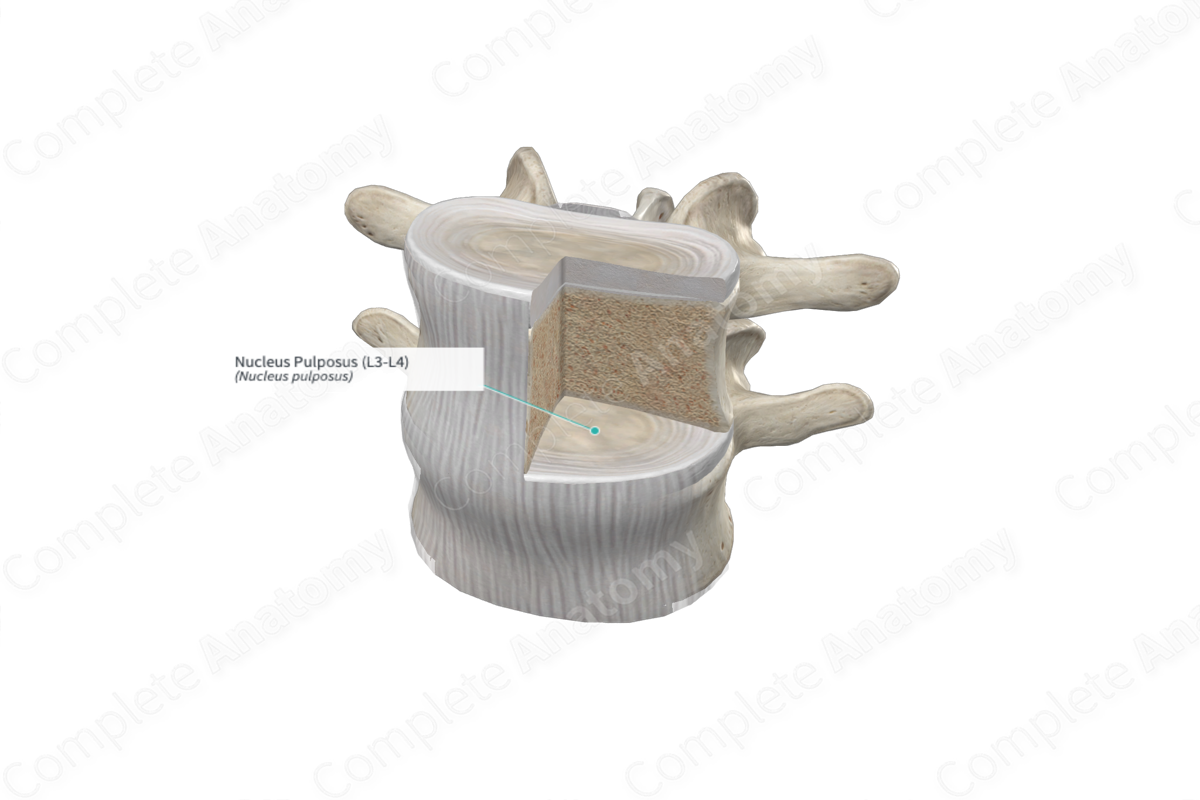
Anatomical Relations
The nucleus pulposus lies posterior to the center of the vertebral body. It is surrounded by the concentric lamellae of the anulus fibrosus.
Related parts of the anatomy
Function
The nucleus pulposus acts as a shock absorber and permits a very limited range of movement between vertebrae. In the elderly, the nucleus pulposus is less jelly-like and it increases its fibrous content. Thus, they lose their flexibility and are more prone to injury (Waxenbaum and Futterman, 2017).
Structure
The nucleus pulposus is well developed in both the cervical and the lumbar spine. Postnatally it is a mucoid, gelatinous substance. Over time, collagen fibers from the internal surface of the anulus fibrosus invade and eventually form a gel-like, fibrocartilaginous tissue characteristic of mature intervertebral discs.
References
Waxenbaum, J. A. and Futterman, B. (2017) 'Anatomy, Back, Spine, Intervertebral Disc.', Treasure Island (FL): StatPearls Publishing.
Learn more about this topic from other Elsevier products
Nucleus Pulposus

The nucleus pulposus is the soft, gelatinous central portion of the intervertebral disk that moves within the disk with changes in posture.


